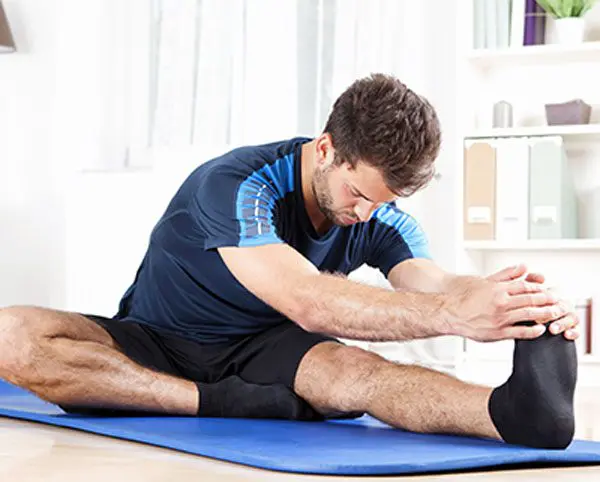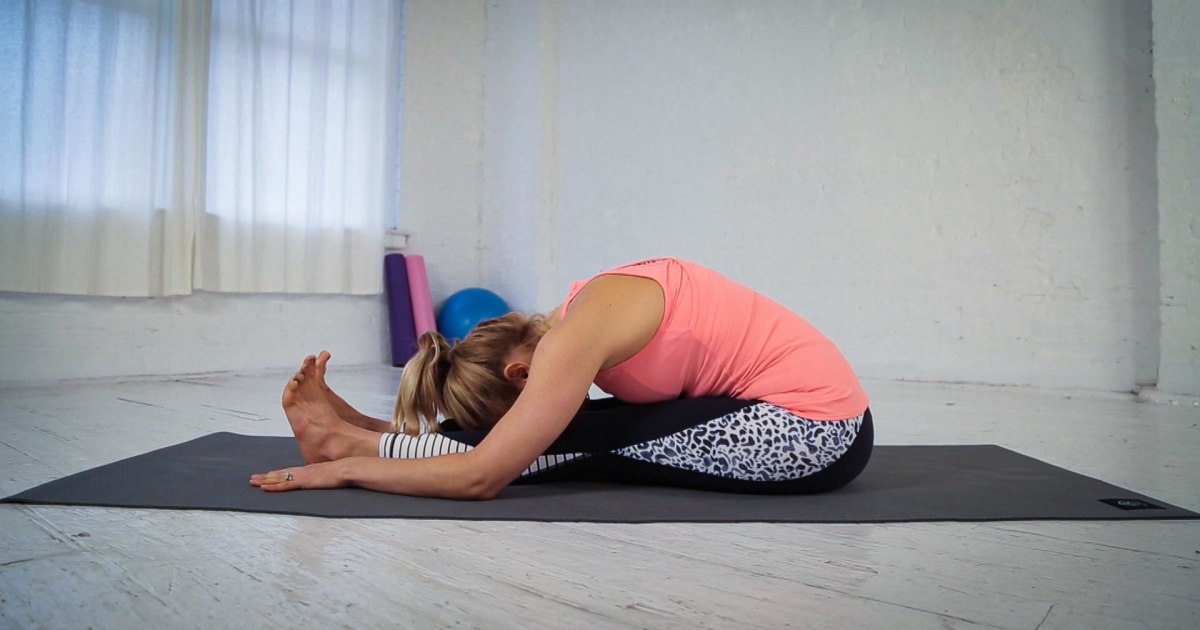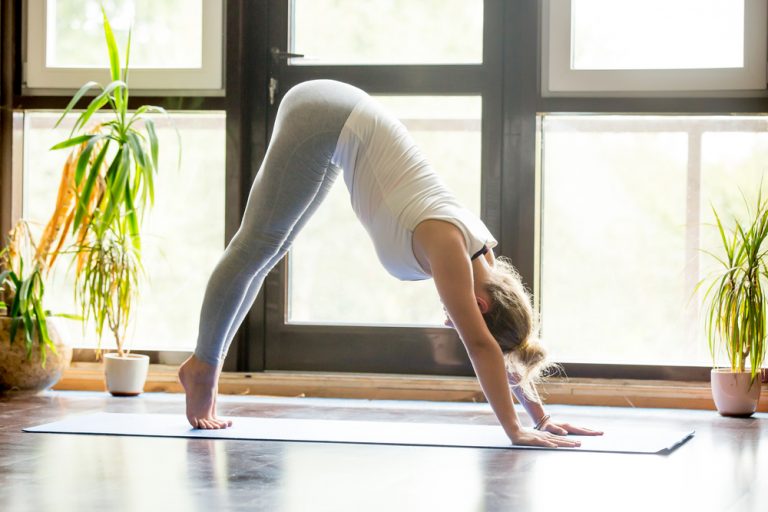Best Hamstring Stretches For Tight Hamstrings
Incorporating hamstring stretches into your routine can help prevent tightness. But before beginning any stretching routine, consult with a health care professional or physical therapist.
Stand with your feet hip-width apart and hinge forward from the hips, reaching for your toes (or as close as you can). Hold this position for 30 seconds, increasing the hold time as you get more flexible.
Forward fold
This is a great pose for tight hamstrings because it stretches the back side of the body, as well as the thighs. It also feels very stable and is a good stretch for the spine. To do this pose, start by laying flat on your back with a neutral spine. Position your legs a little wider than hip-width apart and extend your right leg towards the ceiling. Place your hands on the ground behind your knee, shin or ankle (or clasp them behind your back). Hold this pose for 20-30 seconds and remember to breathe naturally.
This is a deep stretch for the erector spinae back muscles and helps relieve tension in the upper back, lower back and hips. It’s a great stretch for athletes and people who exercise regularly. It’s important to warm up before engaging in any intense physical activity and stretches like forward fold can help prevent injury.
Standing hamstring stretch
The hamstrings are large muscles that run down the back of your leg. Tight hamstrings can cause pain and tension in your hips and lower back. Stretching them regularly can help reduce this strain. This exercise is safe and effective for people of all ages. However, it is important to do this slowly and carefully. If you feel any discomfort, stop the stretch immediately and consult a medical professional.
You can perform this stretch by laying on your back and stretching one leg at a time. You can also use a foam roller to increase the intensity of this stretch. Place the foam roll under your hamstring and extend your leg over it. Then, fold your other leg over the extended leg. This stretches your hamstrings and improves the flexibility of your hips and lower back.
Regular hamstring stretches can help you avoid injuries and increase your performance. Stretching before and after your workouts is especially beneficial. If you’re experiencing pain in your hamstrings, talk to your doctor or physical therapist for advice.
Seated hamstring stretch
A good stretching routine can do wonders for the hamstrings. It can help prevent injuries, improve posture, and increase mobility. It also helps in preventing back pain and hip problems. However, it is important to stretch the hamstrings gently and correctly. If you are unsure which stretching exercises to perform, consult with a health care or fitness professional.
One of the best ways to stretch the hamstrings is to sit on a chair. Extend the leg you’re stretching out in front of you, and then hinge at the hips to lean forward. Repeat this exercise several times and gradually increase your hold time.
The seated hamstring stretch is a great addition to any warm up or mobility flow post-workout. It can be done anywhere, and is easy to modify based on individual needs.
Performing this seated stretch daily can help you stay limber throughout the day. The hamstring muscles are vital for movement and flexibility, so it’s essential to keep them flexible. If you’re not able to stretch your hamstrings properly, they may become tight and painful.
Supine hamstring stretch
Tight hamstrings are a common problem for people of all fitness levels, from athletes to those with sedentary lifestyles. Tight hamstrings can cause pain in the hips and low back, but regular stretching can help ease and prevent that kind of pain.
One of the best stretches for tight hamstrings is the Supine Hamstring Stretch. This stretch targets the hamstring muscles and improves flexibility in the hips. This stretch is also good for improving posture and reducing lower back pain.
To perform this stretch, lie on the floor and scoot your hips as close to the wall as possible. Then, extend one leg up against the wall with the toes pointing towards the ceiling. Hold the pose for 30 seconds. Repeat two or three times on each side.
If you have difficulty performing this stretch, you can use a chair or other props to help you reach your toes. However, be careful not to push yourself too far into the stretch, as this can lead to muscle tearing. This stretch can be modified by bending the leg that is being stretched.
Standing quadriceps stretch
Stretching is important for keeping hamstrings flexible. It can help prevent injury and maintain proper function. A stretching program can be done in the morning and evening, with dynamic stretches in the morning and static stretches at night. It is also a good idea to speak with a doctor or physical therapist before starting a new routine.
The standing quadriceps stretch is a great exercise for tight hamstrings because it targets both legs at once. It is simple and can be performed anywhere. Stand with your left foot in front of your right foot and slowly lean forward. Hold for 30 seconds, and repeat two to three times on each leg.
Tight hamstrings reduce the mobility of the pelvis and can place strain on other muscle groups, which increases the risk of injury. This can occur from activities like running or cycling and even during daily tasks like vacuuming or raking. It is important to stretch the hamstrings regularly to prevent them from tightening up and becoming painful. If you experience persistent hamstring pain, consult with a doctor or physical therapist to determine an underlying cause of the issue.
Downward-facing dog
The hamstrings support lots of lower body movement, including running, jumping, and walking. They are also prone to tightness and injury, which makes it important to stretch them regularly. Luckily, it doesn’t take much to keep them in tip-top shape.
One of the best stretches for the hamstrings is the downward-facing dog, which can be done from any standing position. It’s also a great warmup for running, cycling, or weight lifting, as it elevates the heart rate and increases oxygen flow to the muscles.
Performing this pose with proper form can be difficult for beginners. Experts recommend starting with the basic version of the pose. The feet should be roughly hip distance apart, but not touching.
If you have chronic tight hamstrings, it’s important to see a health care professional or physical therapist for help. They can evaluate your symptoms and offer advice on the best stretching techniques for you.
Pigeon pose
The Pigeon pose is a great hip opener and provides a nice stretch to the front of the hip. It can also provide a good glute stretch. However, it is important to note that people with hip, knee, or back issues should avoid this posture or only practice it under the supervision of a qualified yoga instructor. Also, pregnant women should avoid this pose or practice it only in the early stages of pregnancy.
If you’re new to hamstring stretches, you should start with the beginner variations, such as Classic Pigeon or Resting Pigeon. Then, move on to the more difficult variations. For example, you can try Mermaid pose or a variation called “Pigeon Prep.” If you are still having trouble with the Pigeon pose, you can use a strap to assist in the movement.
To get into Pigeon pose, you should first sit on the floor and extend your right leg in front of you. Then, you should reach your left hand to the ground or a block at the outer edge of the right foot and hold it there.
Conclusion
Hamstrings are a group of muscles that run along the back of your thigh and help to bend the knee. They are very important for exercise, running, and jumping. Tight hamstrings can cause pain and stiffness in other parts of the body, so it is important to stretch them regularly. It is also important to take time for recovery, and make sure to warm up before exercising.
Performing dynamic stretching, like the standing hamstring stretch, is a good way to stretch the hamstrings before and after workouts. It increases blood flow to the muscles and helps to prevent injury. Adding foam rolling to your workout routine can also help increase flexibility and loosen tight muscles. Foam rollers are available at most gyms, and many fitness centers even rent them out for free.
If you’re experiencing persistent tightness in your hamstrings, talk to a health professional. They can help you identify the underlying causes of the tightness and develop a plan to relieve it. Persistent tightness may indicate that the muscles are overlongened, which can lead to injuries. In this case, a physical therapist can help you improve your flexibility and strength .







